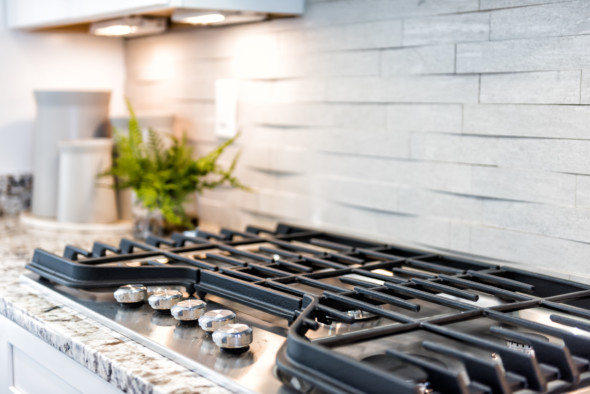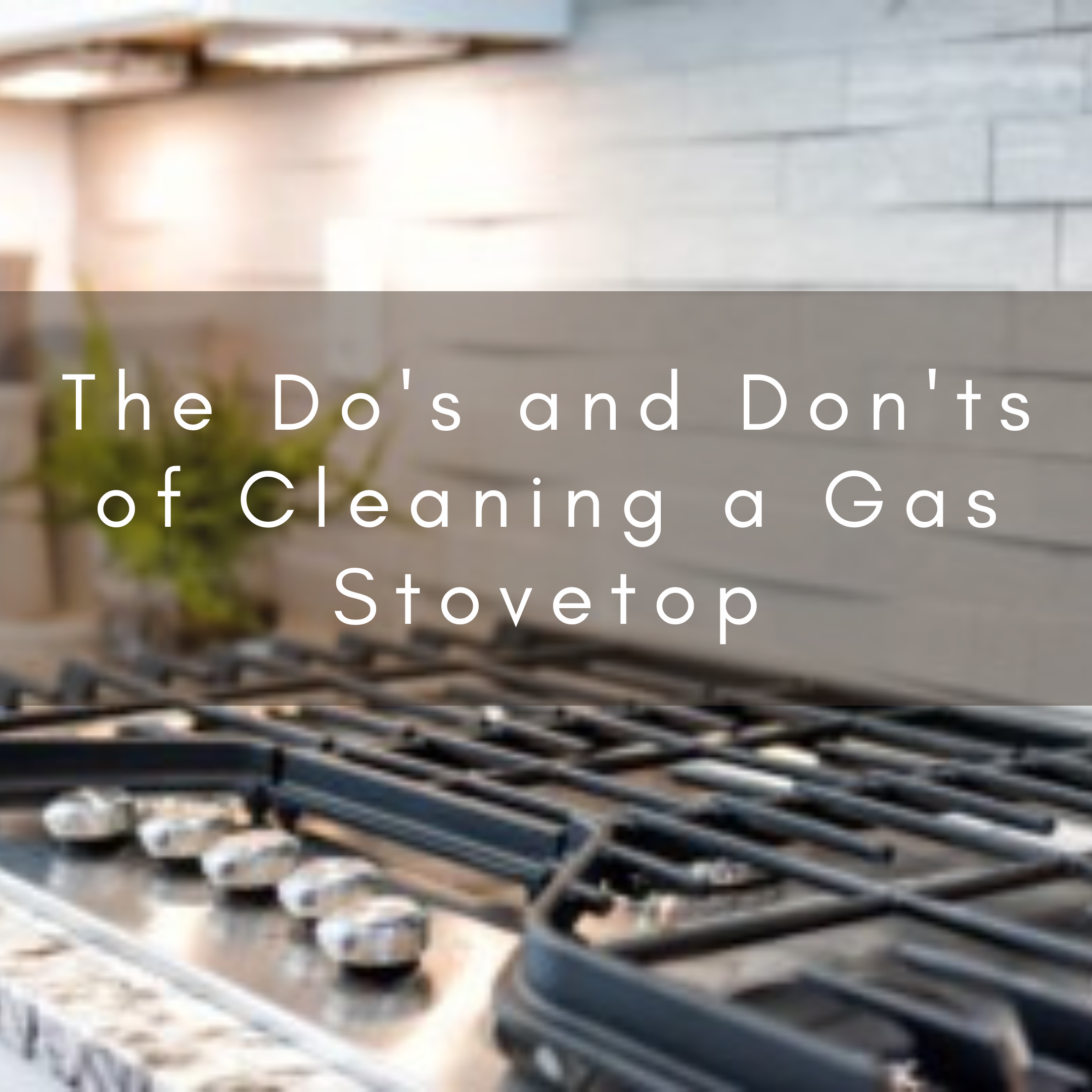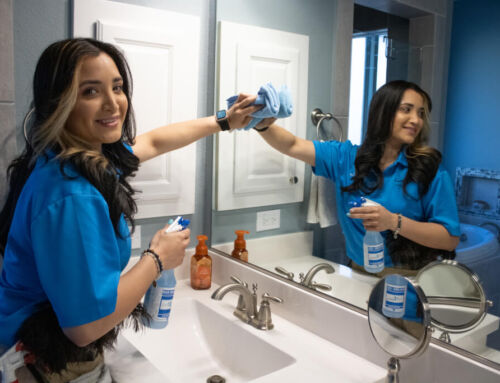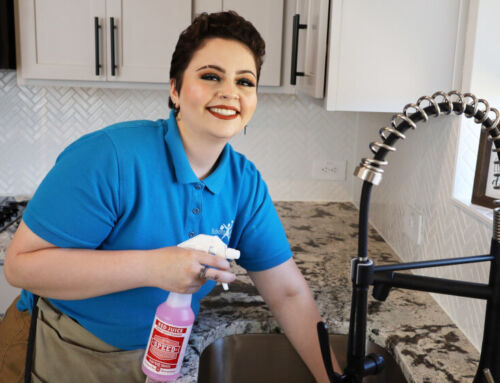
If you’re a keen home cook and have the option, chances are you’ll choose a gas stovetop. Around 40% of US households own one and they’re the undisputed first choice of top chefs and keen amateurs alike.
Cooking on gas offers you a level of control that an electric stove can’t. They’re perfect for high-heat cooking and you can use a traditional wok on them. Plus, there’s something exciting about cooking over an open flame.
The problem is that when the fun’s over, cleaning a gas stovetop can be a serious drag. It’s easy to get it wrong and cause damage to a major appliance.
Join us as we take a closer look at a few do’s and don’ts so you get gas stovetop cleaning right every time.
The Do’s of Gas Stovetop Cleaning
It’s pretty much impossible to cook on a gas stovetop without leaving some kind of mess that you need to clean up. Spoons drip when you remove them from pans and a moment’s inattention can mean a pot boils over. All of this can get crusted onto your gas burners and start to smell and look gross if it’s not cleaned immediately.
Do – Clean It Every Time You Use It
The first do of gas stovetop cleaning is clean it every time you cook. Obviously, enjoy your meal and let it cool to room temperature first.
Now, remove the burner grates and put them to one side. Most gas burners have a ceramic cap that sits on top of a metal head. Remove both of these.
Now clean the grates, heads, and caps using regular dish soap and hot water. Scrub off any residue and let them dry thoroughly. Now wipe the stovetop, scrubbing any stuck-on food with a non-abrasive scrubber.
When every part is dry, reassemble the burners and it’s ready to use again.
Do – Thorough Clean All Parts Each Month
Dish soap will help you to keep on top of regular cleaning. But it probably won’t remove burnt-on food and oil that can cause long-term staining. Every month, set aside an hour for deep gas stovetop cleaning.
Baking Soda Method
Baking soda is awesome at breaking down tough stains if you give it enough time. Create a paste of baking soda with a few drops of water. Remove the grates, caps, and heads and wash with dish soap.
Next, use the paste to coat all the parts you removed from the stovetop. Let them sit with the baking soda paste on them for up to an hour. Avoiding the electric starters, coat the stovetop itself with the paste.
After an hour, thoroughly remove the paste and scrub any stains using a non-abrasive brush. Wash the paste off the grates, caps, and metal heads. Thoroughly dry everything and reassemble.
You now have a deep-cleaned gas stovetop!
Vinegar Method
You can also clean the grates, heads, and caps using vinegar. Make a 1/1 solution of vinegar and warm water and place it in a container large enough to hold all the parts. Put on your gloves and place the parts to soak in the vinegar solution for half an hour.
Clean the parts with dish soap to remove the grease that has worked loose. You can also use a vinegar/water spray to spritz the stovetop and clean it.
Do – Use Oven Cleaner If The Situation Is Dire
Sometimes you need something stronger than vinegar and baking soda.
If you move into a house and the stovetop has been seriously neglected, you’ll need powerful oven cleaning chemicals. Follow the manufacturer’s instructions on how to clean a gas stovetop with them.
You’ll usually need to cover all the parts with the oven cleaner for up to thirty minutes before scrubbing it away. This will give it a chance to break down the residue of meals gone by and help it to function as it should do again.
The Don’ts of Gas Stovetop Cleaning
Gas stoves are not dangerous if you use them carefully. But there are a few definite don’ts that you need to avoid when cleaning a gas stovetop.
Don’t – Forget to Shut Off the Pilot Light
Older gas stoves come with a pilot light that is always on, ready to ignite the mixture of gas and air that comes out of the burner. Make sure that you shut this off before you start to clean if it has one.
Don’t – Use a Knife to Remove Stains
It’s easy to get vexed by some burnt-on cheese and feel the urge to scrape away at it using a knife. But you must resist this urge! You’ll scratch the surface paint or treatment on the stovetop and it’ll leave an ugly gash that will never go away.
Instead, use gentle methods, such as soaking the stain in dish wash and water or baking soda paste. Then use a non-abrasive scrubber or brush to gently remove it.
Don’t- Replace Parts While They Are Still Wet
It’s very important to dry all parts thoroughly before putting them back. If you don’t, they can easily rust.
The Easiest Way of Cleaning a Gas Stovetop
Want to know the very easiest way of cleaning a gas stovetop? One that doesn’t involve you lifting a finger? Hire a professional maid service to do it for you.
If it’s been a while, you’ll probably need a deluxe clean. This service includes giving your gas stovetop a thorough scrubbing. Professionals know the correct chemicals and techniques to make your gas stovetop gleam.
This can provide the basis for following the other ways to keep a gas stovetop clean. With regular light cleaning after each use, you’ll only need to deep clean it every couple of months.
Gas Stovetop Cleaning Hacks That Work
Cleaning a gas stovetop is not as much fun as cooking on one. But these hacks can make it as painless as possible. But even the best hacks require time and commitment.
If you know that’s never going to happen, let Buckets and Bows do the hard work for you. Our professional maid service can provide top-to-bottom deluxe cleans as well as maintenance general house cleaning. Whichever service you choose, we make it super-easy to keep your gas stovetop clean, along with the rest of your house.
Call us on 972-219-0400 or get an instant online quote today!







Leave A Comment